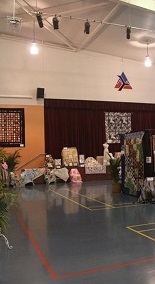Learn about Marketing: For the Leisure Industry
 Marketing is concerned with relating the supply of products (or services) to its potential demand in such a way as to satisfy the needs and wants of customers or clients and create a profit for the supplier.
Marketing is concerned with relating the supply of products (or services) to its potential demand in such a way as to satisfy the needs and wants of customers or clients and create a profit for the supplier.
The process of marketing is that of transferring goods and/or services from producer to consumer at a profit. It should add maximum value to the product at minimum cost.
The marketing manager/personnel is concerned with such activities as:-
pricing, selling, merchandising, advertising, promotion, packaging, market research, transport, destination, placement, planning, and accounting. In fact all those processes which will enable he/she to maximise the added value.
Marketing in the fullest sense of the word, is "the name of the game" and the "game" is fundamentally concerned with "competition", that is, the offering of substitutes and/or complements.
Marketing today is a consumer-based approach to business activities where each aspect of business is co-ordinated in terms of what the consumer wants.
So marketing is not just selling!
Marketing involves....
- Attracting customers
- Persuading them to buy
- Selling
- Keeping customers satisfied (so they come back!) by using the above activities.
1. Introduction to Marketing
2. Marketing Strategy
3. Media Promotions
4. Promotional materials
5. Complaints
6. Managing Membership Levels
7. Sponsorship & Fundraising
8. Managing Events
9. Managing Promotional Activities
10. Market Sensitive Recreation Services
Each lesson culminates in an assignment which is submitted to the school, marked by the school's tutors and returned to you with any relevant suggestions, comments, and if necessary, extra reading.
Learn about Supply and Demand
Access to services and facilities for leisure can vary from place to place and time to time. If it is easy to find a gym whenever you want one; there will be greater competition between different gyms to attract your patronage. When there is only one gym in your locality though; there is no competition. Prices charged can be greatly affected by a climate of excessive supply and low demand for such facilities.
In any free enterprise exchange economy, prices are usually determined by the interaction between supply and demand.
Demand
Without demand, supply will stagnate hence marketing sets out to stimulate demand. If demand is not sustained, production must slow down with resultant unemployment and loss of profits both in production and in every aspect of the distributive system.
Factors determining demands are:
- Consumer’s income
- Price of produce
- Price of competing produce
- Price of complementary produce
- Season, weather conditions, consumer tastes, trends, or other such factors.
Price increases normally produce a change in demand. A lower price, generally means a larger quantity consumed. If the price increases, then the demand usually decreases and a smaller quantity will be consumed.
As income increases, consumption generally increases, but the buyer may change his/her priorities ie. 10% increase in income generally means only 1-2% increase in food consumption. However there is a general trend that this increase will be demand for processed or convenience foods.
For use of leisure services to increase, the population must increase!
- The price of competing/substitute facilities may directly affect the demand to use that facility eg. an increase in cost of hiring a leisure centre may mean the demand for a nearby bowling alley may increase. If the cost of using the local leisure centre for a birthday party goes up; some people may choose to use the bowling alley instead.
- The purchasing pattern of salad vegetables shows a good example of complementary produce. When lettuce is in demand, tomatoes and other salad vegetables will also increase in demand, and consequently price.
Supply
If supply shifts leftward up the demand curve, the price will increase and quantity decrease.
THE MARKETING MIX
Marketing includes every aspect of getting a product or service from the supplier to the consumer. This includes a wide variety of functions. Traditionally, the core functions of marketing have fallen under four general categories, which are referred to as the 4 'Ps' of the marketing mix and are what defines your business. Some academics and marketing experts have also referred to the marketing mix as including five or six ‘Ps’. We will focus on the traditional 4 ‘Ps’ of the marketing mix:
Product
Includes - size, features, functions, guarantees, brand, warranties, packaging for a product or service. The quality of the products a business sells should correspond to the buying price, it is important that your customers perceive your products as having value for money i.e. the quality, usefulness, uniqueness or diversity of application is high in comparison to the cost. If the quality is low in comparison to the cost then your customers’ perception of the product will also be low.
Price
Consider - higher or lower than competitors’ pricing, profit margin, volume.
Price is directly related to your client base plus demand and competition. Demand and competition will determine the highest price that you can charge realistically. Prices will vary for similar products but use your competitors’ price to help determine the price you will set. If your prices fall into the top end of the market make sure that the product reflects the decision ie. that it has special features or qualities that those at the middle or lower end do not have. Discounts, credit offers and so on also need to be taken into account when setting a price.
Place
Physical - point-of-sale, distribution, retail, wholesale, agents, franchises, mail order, online.
Mental/Emotional - exclusivity, value, status.
Where are your customers? Consider where your business is based in relation to them. How does the geographical area from which you operate your business, affect the way in which you distribute your products?
Promotion
Advertising, direct mail, referrals, website, sales, telemarketing.